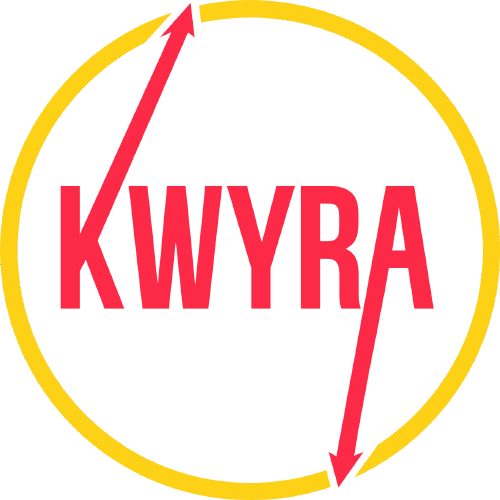Federal laws in the United States changed tax treatment of bearer and registered bonds in the Tax Equity and Fiscal Responsibility Act of 1982. This law removed the option of tax-exempt bonds being issued in bearer form to the public unless the bond matured in one year or less. In addition, under the law the issuer cannot claim interest paid as a tax deduction, reducing the attractiveness of this type of debt obligation to public corporations. Registered bonds are rarely if ever issued in paper form certificates anymore. Instead, a bond registrar — a person or agency that maintains records of ownership and provides transfer services — uses computerized records to establish ownership. A bearer bond, on the other hand, is issued in the form of a physical certificate that is a negotiable instrument, meaning it can quickly be converted to cash.
Registered Bonds vs. Bearer Bonds
The CSDP sends confirmation of ownership to investors on a regular basis. With total dematerialization, the same situation prevails but no scrip is deposited in the CSDP. Today, basically all bonds in the U.S. presently are registered bonds, be they corporate bonds, U.S. ABC has to pay Mr. K an interest of 8% ($100 X 8%) on the face value of the bond.
Jack only learned about this registered bond after Dana’s demise. Therefore, he did not receive any interest payments upon its maturity since he was not registered as its owner. This illustrates the importance of transferring a bond and registering it in a new owner’s name, as mere transfer of possession does not translate to actual ownership. Upon receiving this request, Steve, the transfer agent, canceled the certificate and issued a new certificate with Adam’s (the new owner) details. When Adam was registered as a new owner and the bond certificate was issued, payments were made to him from then on.
Explain Zero Coupon Bonds versus Coupon Bonds
When an interest payment is due, the owner of the bond physically clips that coupon from the certificate and present it for payment. It is because of these coupons that a bond’s interest payments are called coupons. In today’s financial landscape, registered bonds have largely replaced bearer bonds due to increased security, convenience, and regulatory compliance. Bearer bonds are now primarily a historical relic with limited use in modern financial markets. Registered bonds have become the standard in the bond market, primarily due to the security advantages they offer over bearer bonds. Transfer of ownership of bearer bonds took / takes place by exchange of the certificate for funds.
The issuer maintains a record of all bondholders, including their names, addresses, and the specific bonds they own. This ensures that interest payments and principal repayments are sent to the correct individuals. Registered bonds and bearer bonds represent two distinct approaches to debt securities. Understanding the key differences between these two types of bonds can help investors make informed decisions.
Nano-oscillator Achieves Record Quality Factor
A drawback of registered bonds is the length of time it takes for the transfer agent to issue a new certificate. If you want to reap the rewards of a regular income in the form of bond interest payments, you may need to know the difference between bearer and registered bonds. Bearer bonds are payable to the holder, which may change frequently if the bond is sold or traded. When a registered bond is sold or traded, ownership records are modified to indicate the transfer of ownership.
Bearer bonds are easier to transfer because they focus on the physical holding of a bond rather than ownership. Bearer bonds are bonds that release payments to whoever possesses the bond certificate. Vicki A Benge began writing professionally in 1984 as a newspaper reporter. A small-business owner since 1999, Benge has worked as a licensed insurance agent and has more than 20 years experience in income tax preparation for businesses and individuals. Her business and finance articles can be found on the websites of “The Arizona Republic,” “Houston Chronicle,” The Motley Fool, “San Francisco Chronicle,” and Zacks, among others. Here you see an example of a complex multiple-choice question.
- Registered bonds have become the standard in the bond market, primarily due to the security advantages they offer over bearer bonds.
- Bearer bonds are bonds that release payments to whoever possesses the bond certificate.
- Thus, bearer bonds will issue coupon payments or will repay the principal adds up to whoever is in physical possession of the certificate.
- These bonds may be transferred to a different owner only when authorized by the registered owner.
- Hence, the interest and the coupon payments are made to the bearer of the instrument.
It will be apparent that a higher measure of risk attaches to bearer bonds, which is why they are no longer issued in the developed markets. For instance, while walking on a road, if we find a dollar, we pick it up, and it becomes ours with no validation required. In the process, the bond owners receive regular interest payments by delivering the coupons from the bond certificate to the ones paying that interest. These fixed-income securities are similar to traditional bonds with respect to having a maturity date and a coupon interest rate. The reverse of a registered bond is a bearer bond, for which there is no owner record.
Registered bonds incorporate debt obligations that have the owner’s name and contact data registered on file at the responsible company. Just the individual recognized as the registered owner, as of the interest payment date, may receive the settled upon earnings. Any individual who presents a bond certificate that isn’t the registered owner on file will be denied the coupon payment. Assuming a registered bond is lost, taken, or obliterated, it very well may be handily supplanted due to the fact that the owner’s data is on file with the issuer.
Downsides of registered bonds
- Bearer bonds are easier to transfer because they focus on the physical holding of a bond rather than ownership.
- Interest payments, such as semi-annual or annual, are usually made periodically and are directly deposited into the bondholder’s bank account.
- When you buy a T-bond, your ownership is recorded electronically through the TreasuryDirect system, which tracks the name and details of the bondholder.
- These registered owners receive the agreed-upon profit rate on the interest payment date.
Issuing long-term bonds represents an important source of financing for many large companies. Both registered and bearer bonds typically carry maturities of five years or longer, and are classified as long-term debt obligations. We have discussed the unique features of registered bonds in the sections above.
What should an owner of a registered bond do in the event of a dispute or breach pertaining to payment of interest?
On the Series 7 exam, all bearer and partially registered bonds that are in default should be delivered with any unpaid coupons attached. Bonds are considered in default when scheduled interest payments that are owed to the holder by the issuer have not been paid. Whoever can produce the certificate is presumed to own the bond. Part of the certificate is a series of coupons, each corresponding to a scheduled interest payment on the bond.
Consequently, municipal bonds, whose tax-exempt status attracted investors, became less common in bearer forms, after the law went into effect. In the case of bearer bonds, none of the above applies, i.e. the name of the issuer is not placed on the bond, and neither is a register kept. It streamlines the trading process, making buying and selling bonds quicker and more efficient. If your registered bond is lost or stolen, you can report it to the issuer or the relevant financial institution. They can then take steps to replace the lost bond and protect your investment. Interest payments, such as semi-annual or annual, are usually made periodically and are directly deposited into the bondholder’s bank account.
Subsequently, only ten years were left for the bond to mature. Steven M. Rice is a partner in Empire Stockbroker Training Institute, one of the country’s leading schools for securities industry training. He is also an instructor at Empire, and his upbeat training style, entertaining sense of humor, and extensive knowledge are highly regarded by his students. The example above indicates how these bonds can still be redeemed irrespective of what time they belong to. Trade & invest in stocks, ETFs, options, futures, spot currencies, bonds & more with Interactive Brokers today.
Whether coupons are physically clipped on that specific date is not so important, but bonds trading for settlement by the coupon clipping date trade with the coupon. Those trading for settlement after the coupon clipping date trade without it. Accordingly, the registered vs bearer bonds coupon clipping date plays the role of an ex-coupon date. Registered bonds are typically bought and sold through a brokerage account. When you purchase a bond, your name is recorded as the owner in a central securities depository system. Regardless of whether a person has a bond certificate in their possession, they will not be paid if their name is not registered with the issuing authority.
The bond term coupon emanates from the bearer bonds issued in the distant past. Attached to the certificates were perforated coupons on which the amount of interest was printed. On interest dates these coupons were detached and presented to the issuer to honour. An example is provided in Box 218 (note the coupons on the right of the certificate). Transfer of ownership of registered bonds is accomplished by the completion of a Securities Transfer Form (CTF – also called transfer deed). This CTF is usually prescribed in terms of the statute that regulates companies / corporations.
Anyone who presents a bond certificate that is not the registered owner on file will be denied the coupon payment. If a registered bond is lost, stolen, or destroyed, it can be easily replaced due to the fact that the owner’s information is on file with the issuer. When you buy a T-bond, your ownership is recorded electronically through the TreasuryDirect system, which tracks the name and details of the bondholder. When you purchase a registered bond, your name, and other relevant information are recorded in the issuer’s books.



